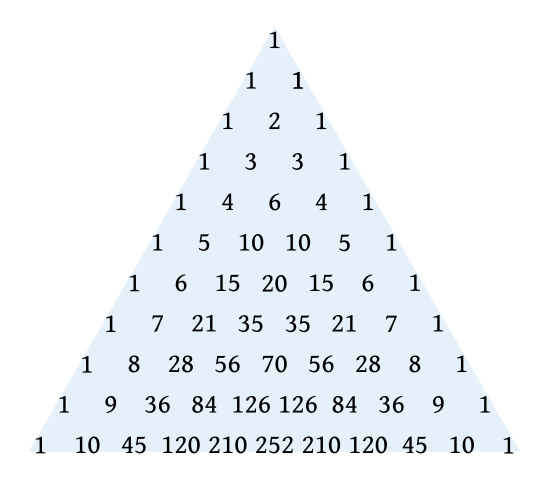
Reader Alex Freuman passed this along — a simple method of establishing any row in Pascal’s triangle, attributed to Edric Cane. To establish, for example, the seventh row (after the initial solitary 1), create a row of fractions in which the numerators are 7, 6, 5, 4, 3, 2, 1 and the denominators are 1, 2, 3, 4, 5, 6, 7:
Now multiply these in sequence, cumulatively, to get the numbers for the seventh row of the triangle:
These are the coefficients for
.
Cane writes, “It couldn’t be easier to remember or to implement.” Another example — row 10:
